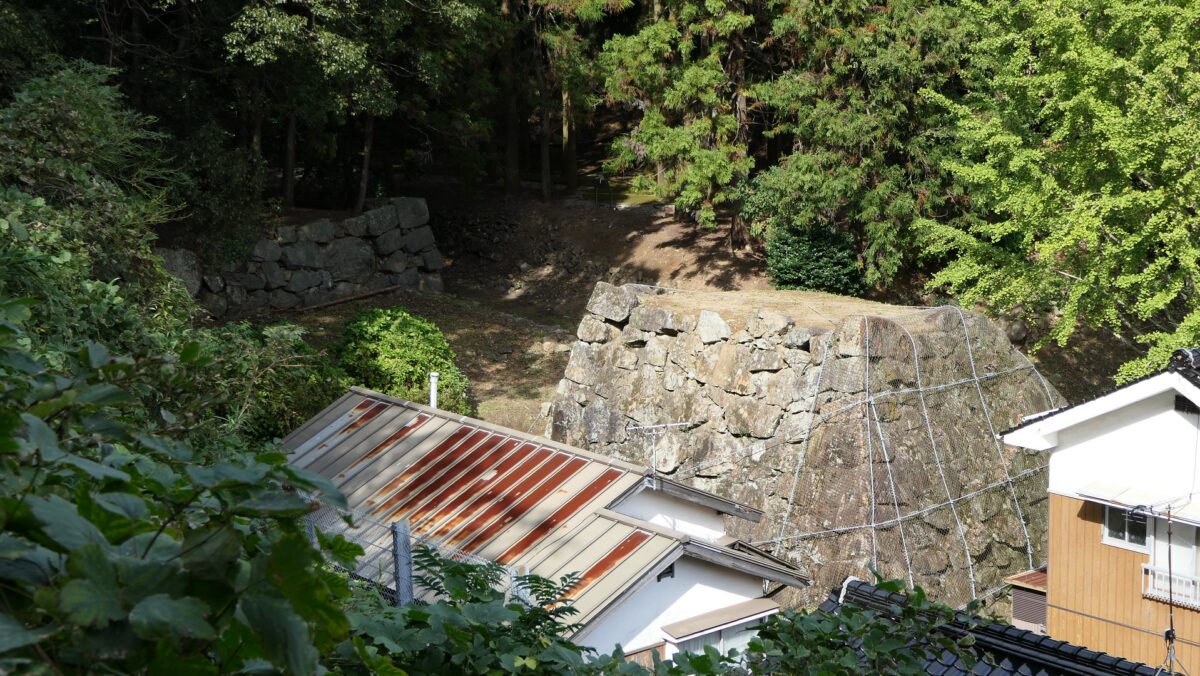Later History
After the Meiji Restoration, Hamada Castle Ruins had a little complicated history. The Japanese Army at first owned the ruins but they remained idle, while the remaining Main Tower collapsed due to the Hamada Earthquake in 1872. No buildings survived. After the ruins were sold to the former lord, Matsudaira Clan in 1890, Shimane Prefecture turned them into the Hamada Park in 1903. The route to the Main Enclosure on the top was developed, on the other hand, some stone walls were destroyed for the construction. In 1938, Hamada-Gokoku Shrine was established at the mid slope of the hill. Its approach from the foot was developed.
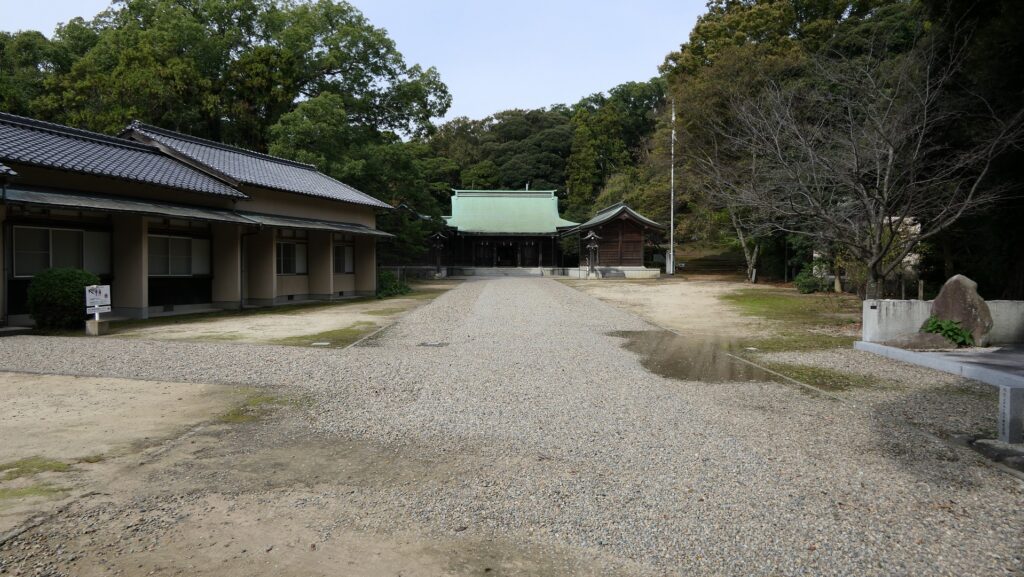
After World War II, Hamada City, which bought the ruins, planned to improve the park as well as a working area for people. Another route from the foot was developed and some stone walls were repaired by the work. The stone walls had been left after the fire at the end of the Edo Period. However, it was pointed out that their original condition was not considered in the repair. As a result, the ruins were designated as a Prefectural Historic Site of Shimane Prefecture in 1962.
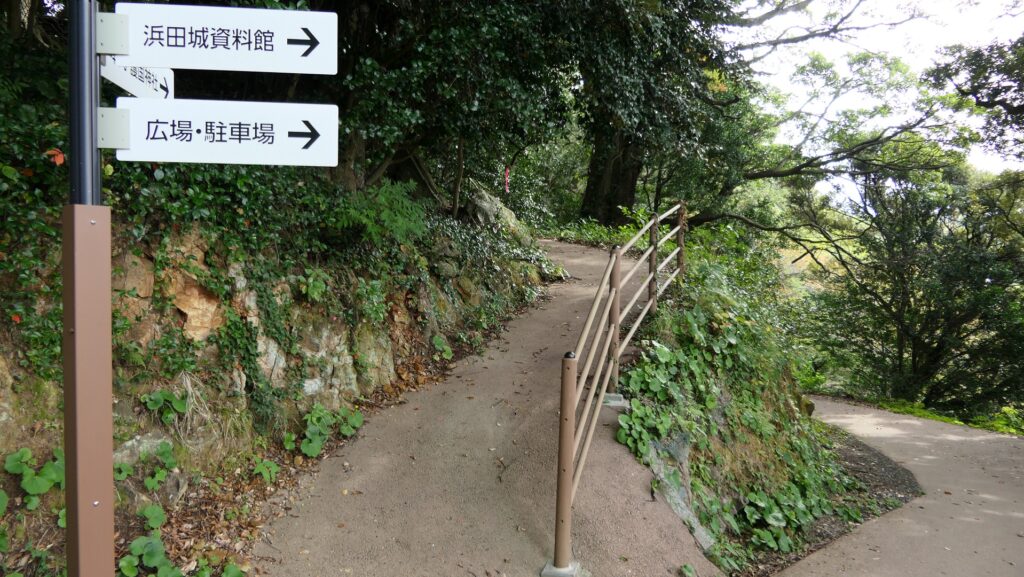
Features for General Visitors
Going to Castle Ruins through Hamada-Gokoku Shrine
Today, there are two routes to the ruins of Hamada Castle, houever they are not the original. If you choose the approach to Hamada-Gokoku Shrine as the route, it goes straight to the shrine at the mid slope with stone steps. You can look down Nakanomon Gate Ruins to the right of the way. In fact, the gate was on the original route.
The map around the casltle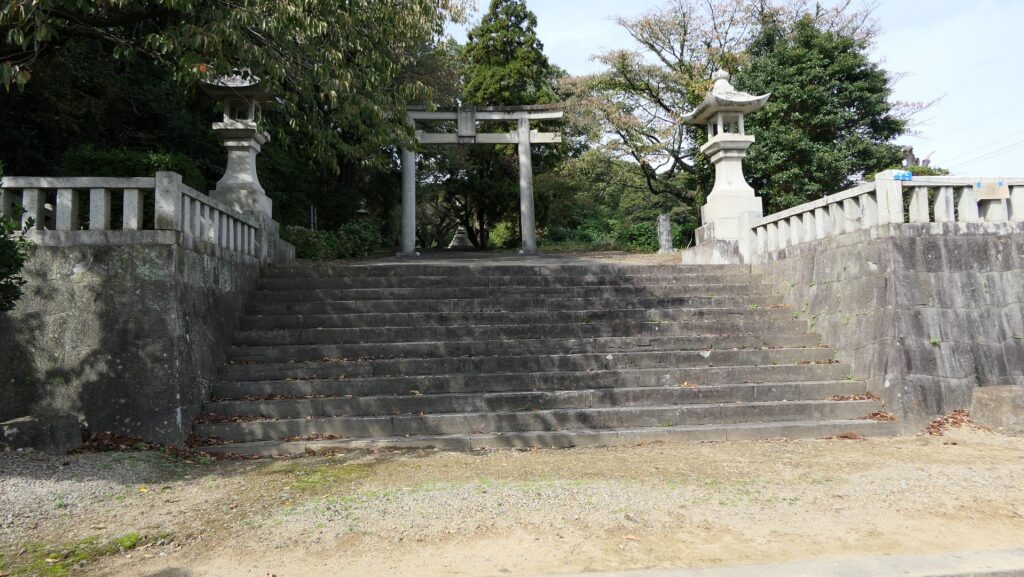
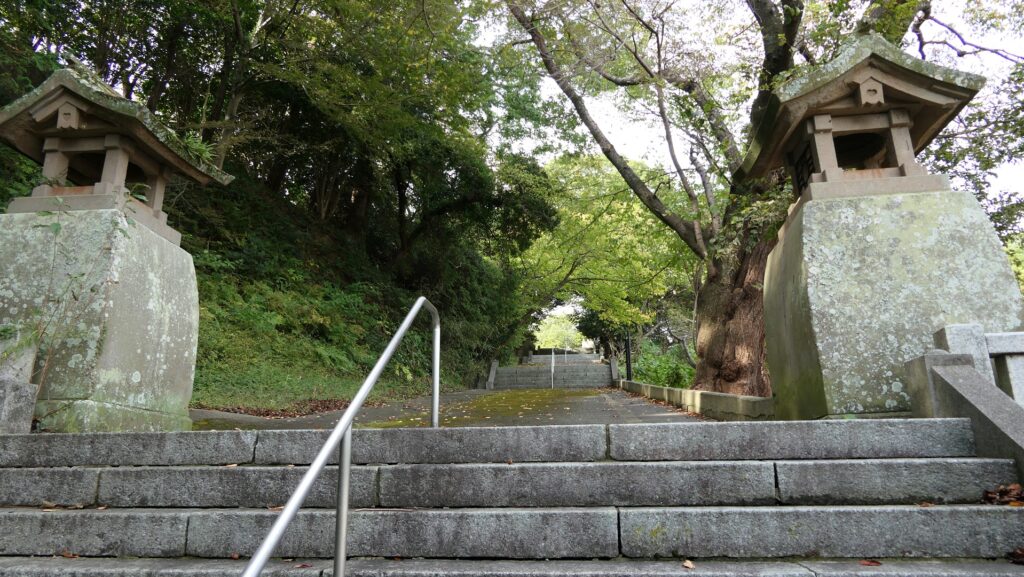
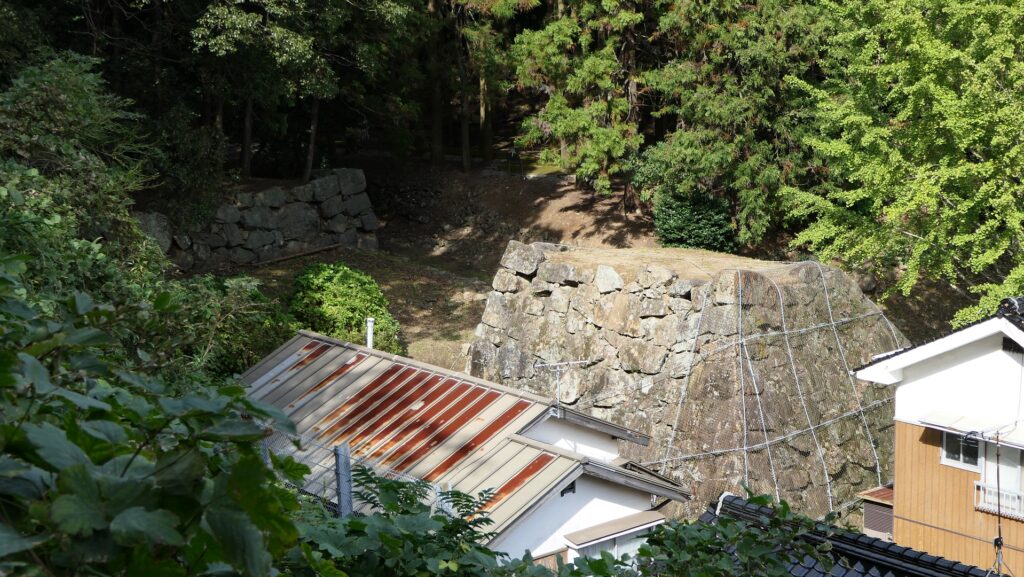
Gate moved from Tsuwano Castle
In the back of the shrine, you will see an old building which looks like a castle gate. However, it is also not original to this castle. When this city was part of the Hamada Prefectural Capital (Hamada Prefecture was later unified with Shimane Prefecture), they moved one of the gates of Tsuwano Castle for its office. The gate was finally moved to the current position in 1967 made as a park attraction.

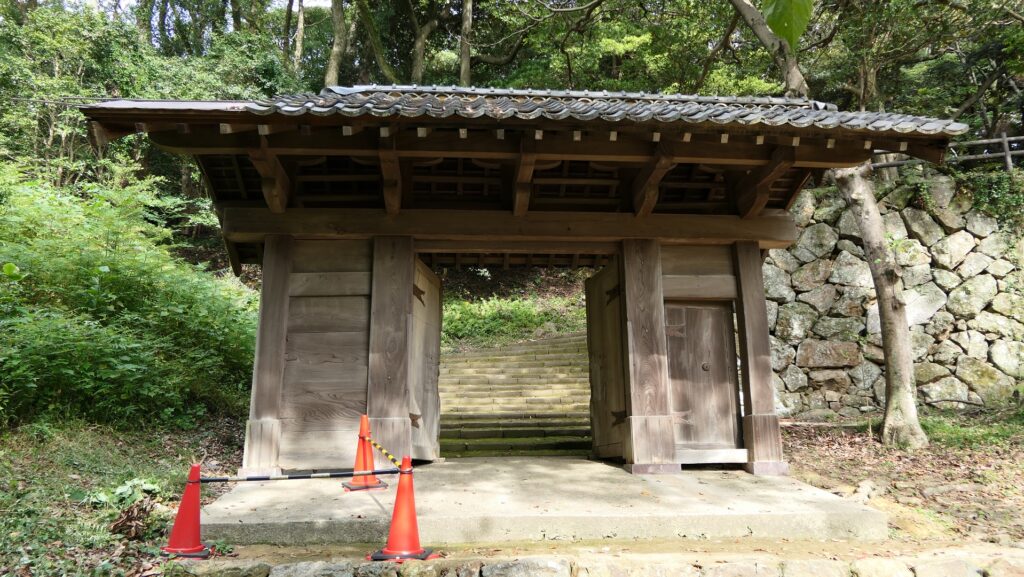

Going to Main Enclosure through Route developed in Meiji Era
You will enter the center of the ruins from the gate, the route becomes likely the original one surrounded by stone walls, but once you turn left, you will see another straight route to the Main Enclosure on the top. Such a layout was hard to believe for a castle because it would have been easier for enemies to attack it. In fact, this route was also developed for the park during the Meiji Era by breaking the stone walls of the Barbican Enclosure beside the Main Enclosure. That’s why visitors have easy access at the top.

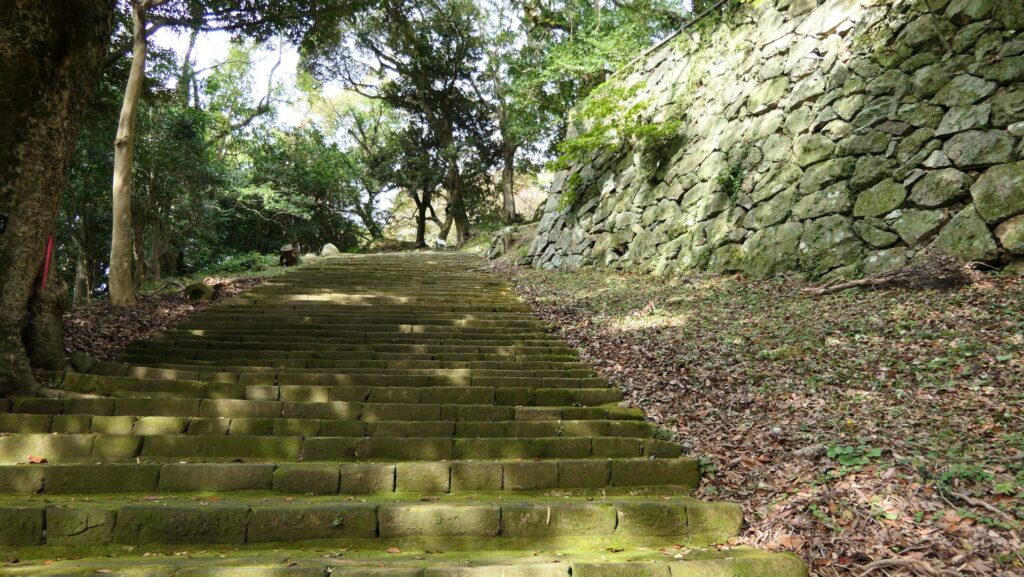
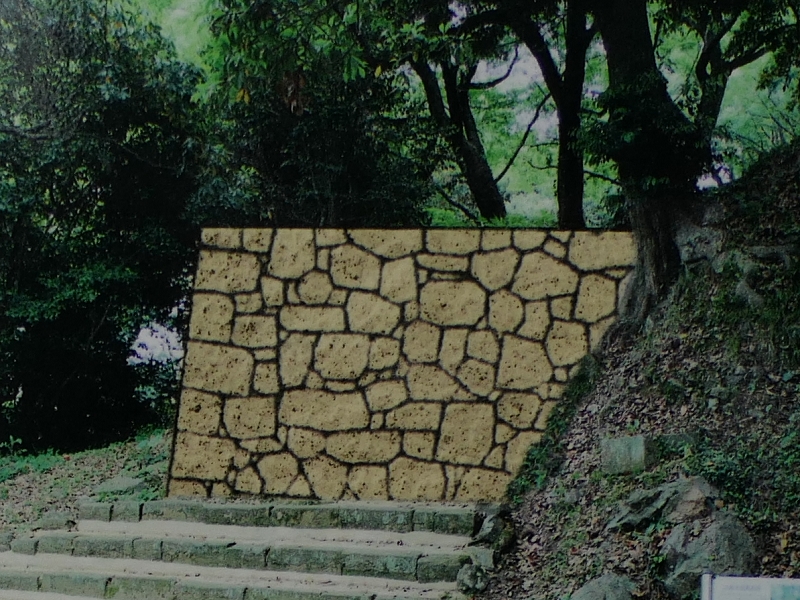

Main Enclosure becomes Park Square
The inside of the Main Enclosure is a square now where you can see views such as the Hamada city area and Tonoura Cove. You can also see some remaining stone walls around and the rest seemed to have collapsed due to the earthquake back in 1872.
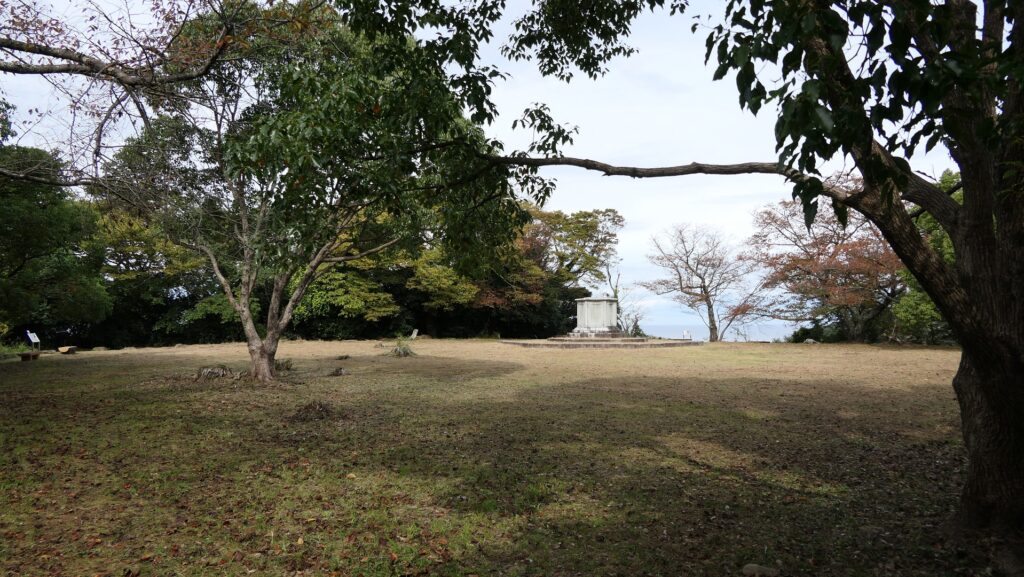
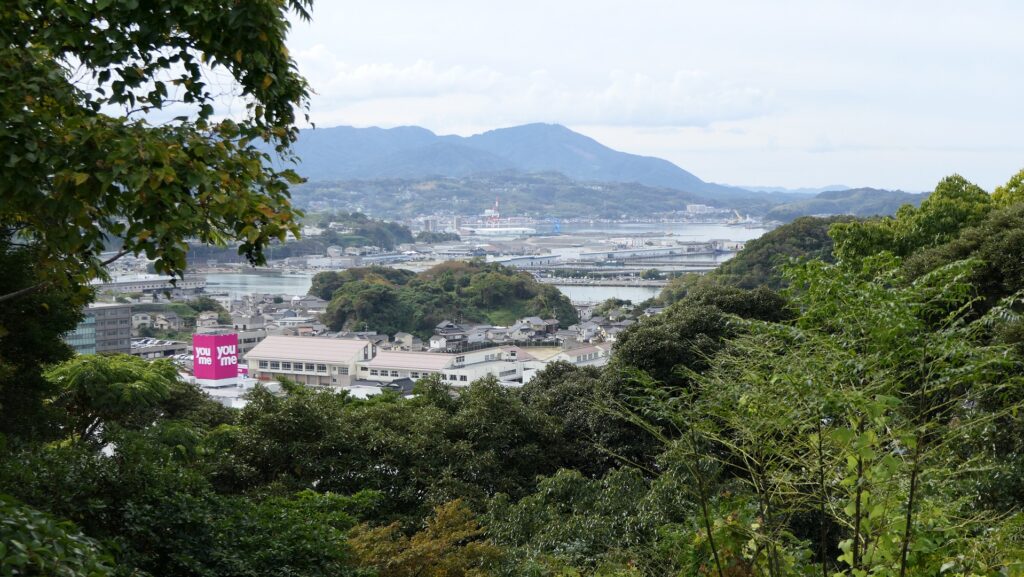
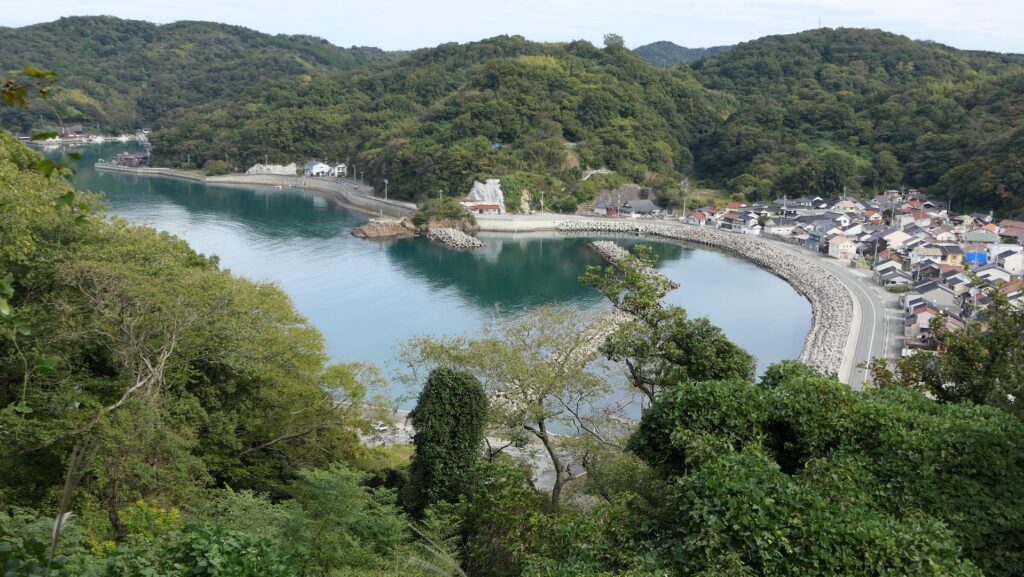

To be continued in “Hamada Castle Part3”
Back to “Hamada Castle Part1”

